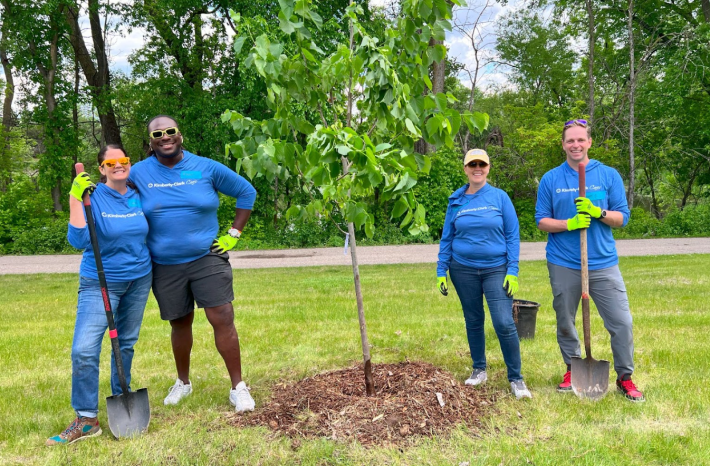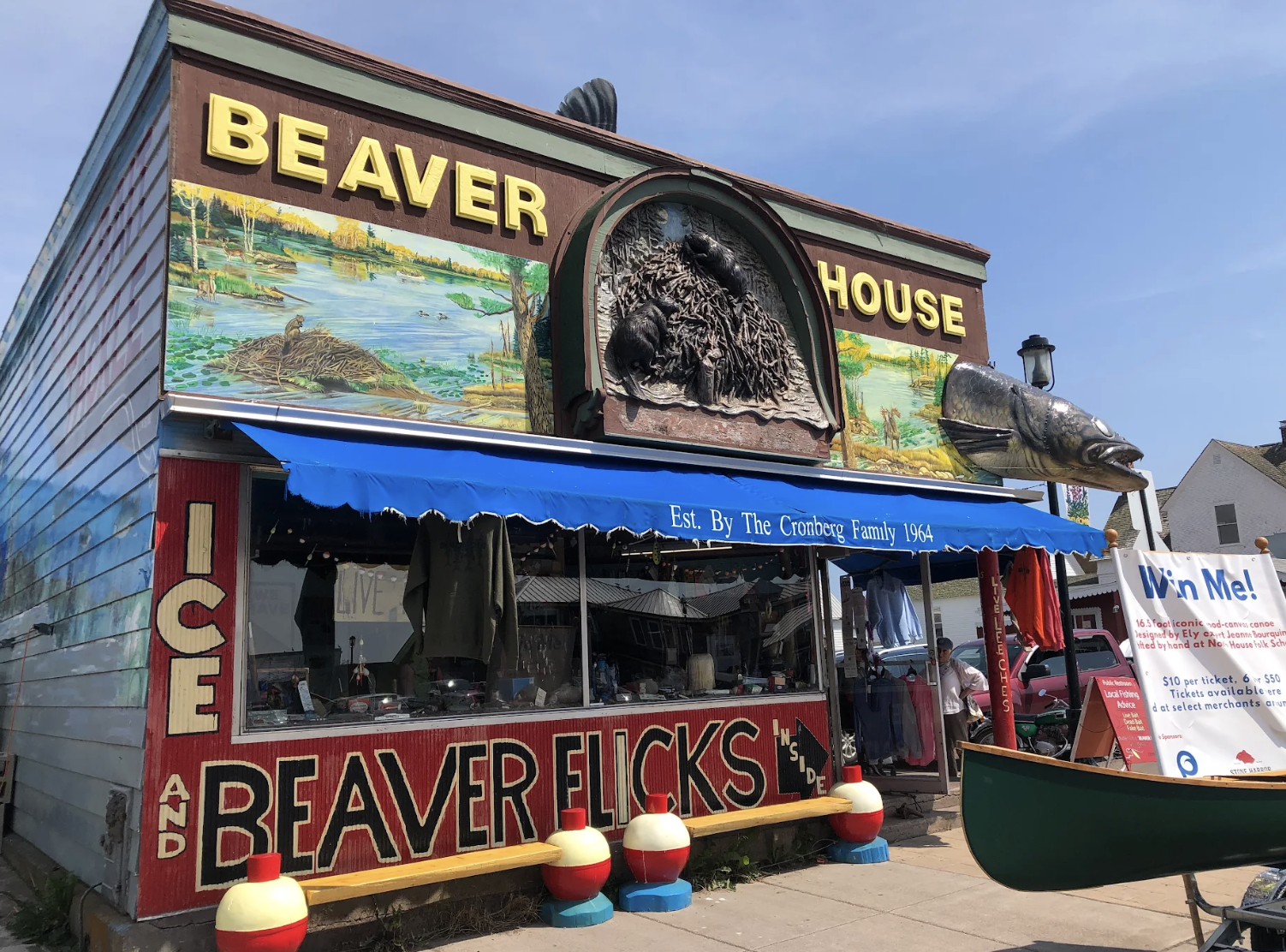Minnesota isn’t known for its hot weather. Nonetheless, we’re deep in the dog days, and stepping outside sometimes feels like a sauna. While other areas have it much worse, hot weather here can still be dangerous. According to the National Weather Service, 19 Minnesotans have died from heat and humidity since 1990, which makes extreme heat Minnesota’s third-deadliest weather phenomenon in that period, after tornadoes and flooding.
FEMA defines extreme heat as two or more days where the temperatures are above 90°F. Safety guidance is generally based on the “heat index,” a combination of heat and humidity that’s designed to measure what it actually feels like outside. For example, around 5 p.m. on August 2, 2024, the temperature at MSP airport was 90°F and the humidity was 45%, so the heat index was 93. At that level, the National Oceanic and Atmospheric Administration advises “extreme caution”—the second-lowest of four levels of risk—pointing out that if you’re outside for a long time or physically active, you could suffer from stroke, cramps, or exhaustion.
Now let’s address the oil rig in the room: These days, when we’re talking about heat, we’re talking about climate change. Temperatures around the world are already increasing, and likely to rise further. The CDC projects that some areas of our state are going to see more extreme heat days over the next 50 years.
Map by CDC, via MN Department of Health
But not all temperature increases are the same. “The temperature is increasing more rapidly in the winter than it is in the summer, and this has enormous impacts on the ecosystems, people, the economy,” according to Richard Rood, a meteorology professor at the University of Michigan. “We don’t usually call them ‘heat waves,’ because they’re not imperiling human health. But the average temperature is not the most important thing here. The most important thing, to me, is that the earth is accumulating heat. That’s one of the reasons the winter is getting warmer.”
Rood says we’ll be seeing more heatwaves and warmer nights. “When it’s persistently warm and the nighttime isn't getting cool, then people, animals, and buildings can’t cool down,” Rood adds.
In Minnesota, we should be more worried about chronic heat than one day with remarkably high temperatures. “The number of days above 95 degrees is actually not going up. In many places, it’s going down,” says Rood of temps in the Midwest. “So it’s important to distinguish between this chronic heating and those bursts of the most extreme heat.”
While our record hottest days are not going to be as dramatic as Phoenix’s, heat can still be a threat in the Twin Cities. And its impacts are not distributed equally.
“People who are younger, under five, pregnant, and older populations have a harder time regulating [their] body temperature,” says Tess Konen, a epidemiologist with the Minnesota Department of Health. “But then there’s also people who are more at risk because of their being outside. So, outdoor workers. We found that males, especially 15 to 34, have higher rates of heat-related emergency department visits.”
Your job isn’t the only social factor that can affect your risk of heat-related illness. There’s also the design of our cities. Referred to as “urban heat islands,” human-built structures like roads and buildings absorb and then emit heat in ways that are less likely to happen near areas with trees and bodies of water. If you spend time traveling around Minneapolis, you’ll notice that certain “cooler” neighborhoods—usually wealthier ones—have more greenery.
“What ended up happening in Minneapolis and the surrounding area is that these disinvested areas attracted a lot of development that was very land-hungry,” says Vivek Shandas, a professor of urban studies and planning at Portland State University. “You would see huge freeways that would be developed in the 1950s and onward. I’m thinking about places, for example, like Cedar-Riverside.” Other examples of “land-hungry” development are big-box stores, parking lots, and many apartment buildings. “You start seeing these complexes of asphalt and concrete showing up—these very hard landscapes that then amplify temperatures when it gets hot.”
“Unfortunately, due to historic redlining and how we’ve invested in our city over time, communities that have more people of color also tend to be areas that have lower income, and that’s where we see an increase in urban heat islands, because there’s less green space,” says Bharat Balyan of the Minneapolis Health Department.
One thing helping to beat the heat is the Minneapolis’s City Trees program, which has provided free and low-cost trees to residents and organizations in the city since 2006. Another organization that is working to plant trees in the Twin Cities is Tree Trust. They distribute and plant trees and provide professional training for young people. “One mature tree can provide the same cooling benefits as 10 room-size air conditioners,” says Karen Zumach, the director of community forestry for Tree Trust.

The city of Minneapolis is also currently working with Xcel Energy to build three “resilience hubs” that will provide solar energy and backup power at the Minneapolis American Indian Center, the Sabathani Community Center, and in three neighboring buildings in North Minneapolis in case of emergencies. “These are havens that the community already trusts to go to during an extreme heat event,” says Balyan.
Another way to alleviate the effects of high temperatures is to construct buildings in ways that accommodate more greenery. “Having reflective roofing, or white roofs, is one of the things that have been implemented to mitigate urban heat islands,” says Zumach. “Another one is green roofs. If you’ve ever flown out of Terminal 2 at MSP, there’s a pretty spectacular green roof there.”
Apartment projects should also consider cooling roofs and room for vegetation. “Instead of doing what is currently done now with multifamily residential, where you often create a horseshoe design and slap a big asphalt parking lot in the middle, what if you were to do a little bit more of a European design where it’s essentially green space in the center, and the perimeter of the city block has the development?” suggests Shandas.
But even if we adjust policies and architecture to cool us down, Minnesotans will still need to be aware of hot weather risks. “Minnesota’s not really used to extreme heat,” says Konen. “Our bodies aren’t really as adjusted to the temperature versus somebody from Arizona.”







